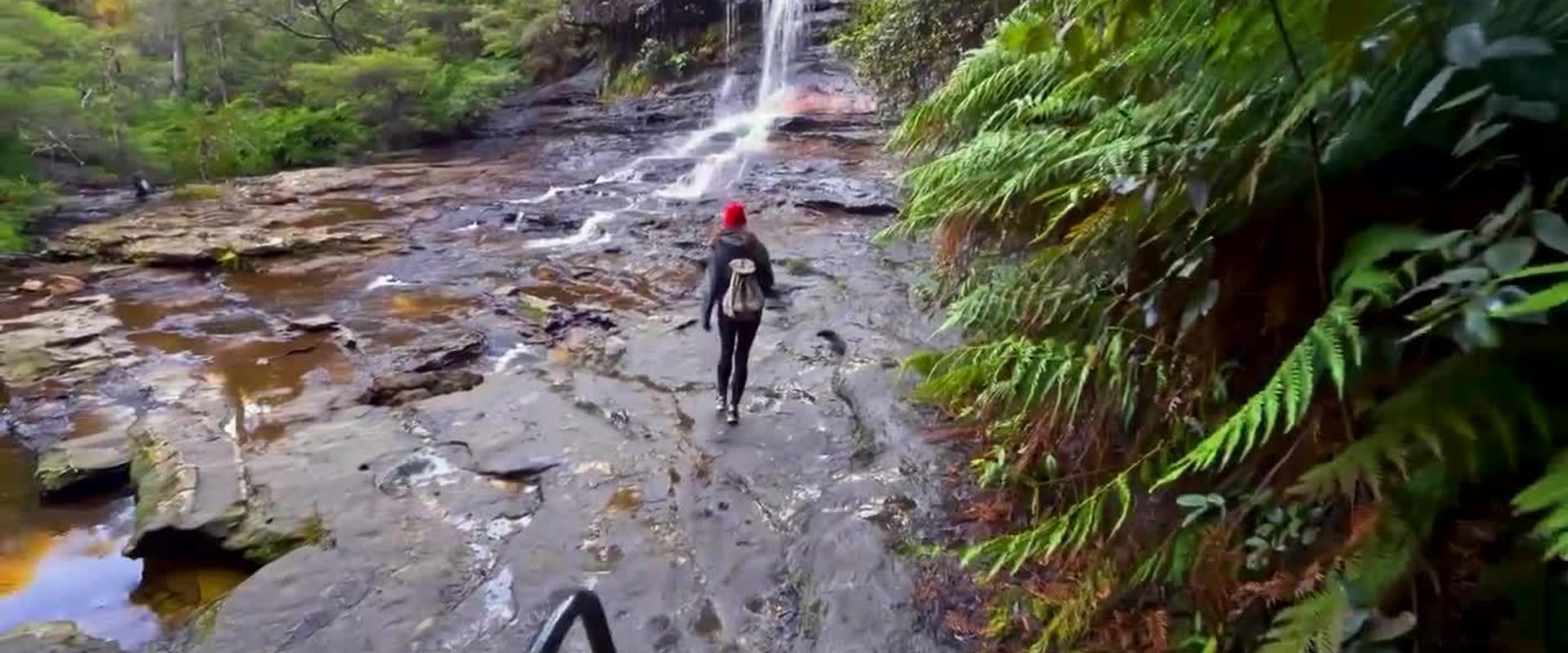Welcome to the land down under, where the rugged beauty of nature meets thrilling adventure. Australia is a country known for its diverse landscapes and outdoor activities, and one of the top destinations for avid hikers is the Blue Mountains. Located just two hours away from Sydney, this spectacular region is a must-visit for anyone seeking an unforgettable hiking experience. The Blue Mountains, aptly named for their blue hue that comes from the eucalyptus trees that cover the valleys, offer a plethora of hiking trails for all levels of hikers. From leisurely strolls to challenging treks, there is something for everyone in this stunning wilderness.
Whether you are a seasoned hiker or a beginner looking to explore the great outdoors, the Blue Mountains will not disappoint. In this article, we will take you on a journey through the Blue Mountains, as we uncover the best hiking spots, breathtaking views, and hidden gems waiting to be discovered. So put on your hiking boots, grab your backpack, and get ready to immerse yourself in one of Australia's most remarkable destinations - hiking in the Blue Mountains. Welcome to the breathtaking Blue Mountains, home to some of the most stunning hiking trails in Australia. If you're an adventure seeker looking for an unforgettable experience, then this article is for you. In this guide, we'll take you through everything you need to know about hiking in Blue Mountains, from the best trails to tips for a successful hike.
So let's lace up our hiking boots and get ready to explore this beautiful region! The Blue Mountains are truly a hiker's paradise, offering a unique and diverse landscape that is unlike anywhere else in Australia. The region is known for its vast expanse of eucalyptus forests, which emit a blue haze that gives the mountains their name. These forests are home to a wide variety of flora and fauna, making it a nature lover's dream come true. As you hike through the forests, you'll also come across towering cliffs that offer breathtaking views of the surrounding valleys and canyons.
One of the things that makes hiking in Blue Mountains so special is the variety of trails available. With over 140 kilometers of hiking trails, there's something for every level of hiker. For those who are new to hiking or want a more leisurely experience, there are easy walks that offer stunning views without too much physical exertion. These walks are also great for families with young children or elderly hikers.
If you're looking for a challenge, the Blue Mountains also has plenty of options for experienced hikers. The Grand Canyon Track is a popular choice, taking you through a narrow and deep canyon with breathtaking views of waterfalls and rock formations. Another popular trail is the Three Sisters Walk, which offers stunning views of the iconic Three Sisters rock formation and the Jamison Valley. For those who want to see one of the most beautiful waterfalls in the Blue Mountains, the Wentworth Falls Track is a must-do.
This challenging trail takes you through lush rainforests and offers multiple viewpoints of the stunning Wentworth Falls. Along the way, you'll also come across smaller waterfalls and streams, making for a truly magical experience. Before embarking on your hiking adventure in the Blue Mountains, there are a few things to keep in mind to ensure a successful and enjoyable experience. Firstly, make sure to pack appropriate gear and clothing for the hike.
This includes comfortable and sturdy hiking boots, a backpack with essentials such as water, snacks, and a first aid kit, and appropriate clothing depending on the weather. It's also important to research the trail you plan on hiking beforehand and make sure you have a map or GPS device with you. The Blue Mountains are vast and it's easy to get lost if you're not familiar with the area. Additionally, always follow safety precautions and stay on designated trails to avoid any accidents or harm to yourself or the environment.
In conclusion, hiking in Blue Mountains is an experience unlike any other. With its stunning natural beauty and variety of trails, it's the perfect destination for adventure seekers and nature lovers alike. So grab your hiking boots, pack your bag, and get ready to explore this beautiful region down under!
Tips for a Safe and Enjoyable Hike
Hiking in Blue Mountains can be an exhilarating and rewarding experience. However, like any outdoor activity, it's important to be prepared and take necessary precautions to ensure a safe and enjoyable hike.Here are some tips to help you make the most out of your hiking experience:
- Research and plan your route: Before hitting the trails, make sure to research and plan your route beforehand. This includes checking weather conditions, trail difficulty, and potential hazards along the way.
- Stay hydrated: The Blue Mountains can get hot, especially during the summer months. It's important to stay hydrated by bringing enough water with you on your hike.
- Dress appropriately: Wear comfortable and breathable clothing that is suitable for the weather and terrain. Don't forget to wear proper hiking shoes to avoid slips and falls.
- Bring necessary supplies: In addition to water, make sure to bring snacks, a first aid kit, a map or GPS device, and a fully charged phone in case of emergencies.
- Hike with a buddy: It's always safer to hike with a partner, especially if you're not familiar with the area.
Plus, it's more fun to share the experience with someone else!
The Best Time to Go Hiking
If you're planning a hiking trip to the Blue Mountains, one of the most important factors to consider is the best time to go. The optimal time for hiking in this region depends on various factors such as weather, trail conditions, and peak tourist seasons. The Blue Mountains experiences four distinct seasons - summer, fall, winter, and spring.Each season offers a unique experience for hikers, making it a year-round destination for outdoor enthusiasts. However, the ideal time for hiking in the Blue Mountains is during the cooler months of fall (March-May) and spring (September-November). During these seasons, temperatures are mild and comfortable for hiking, and the landscape is at its most picturesque with colorful foliage and blooming wildflowers. Another factor to consider is the trail conditions.
The Blue Mountains can be prone to heavy rainfall, which can make some trails muddy and slippery. Therefore, it's best to avoid hiking during the wettest months of June-August. However, if you're an experienced hiker and up for a challenge, the rain can add an extra element of adventure to your hike. It's also essential to keep in mind the peak tourist seasons in the Blue Mountains.
From December-February and June-August, the region sees an influx of visitors, which can make popular trails crowded. If you prefer a more secluded hiking experience, it's best to avoid these months and visit during shoulder seasons. In conclusion, the best time to go hiking in the Blue Mountains is during the cooler months of fall and spring, when temperatures are mild and trails are less crowded. However, with proper preparation and precautions, any time of year can offer a fantastic hiking experience in this beautiful region.
Essential Hiking Gear
When embarking on a hike in the Blue Mountains, it is crucial to pack the right gear to ensure a safe and enjoyable experience.Here are some essential items to include in your hiking pack:Hiking Boots: A good pair of hiking boots with ankle support and traction is essential for navigating the rugged terrain of the Blue Mountains. Make sure they are broken in before your hike to prevent blisters and discomfort.
Water and Snacks:
Staying hydrated and fueled is important on any hike, especially in the Australian climate. Make sure to bring plenty of water and high-energy snacks like trail mix or energy bars.Sun Protection:
The Blue Mountains can get quite sunny, so pack sunscreen, sunglasses, and a hat to protect yourself from harmful UV rays.Navigation Tools:
While some trails in the Blue Mountains are well-marked, it is always a good idea to have a map, compass, or GPS device to help navigate your route.First Aid Kit:
Accidents can happen on a hike, so make sure to pack a first aid kit with basic supplies like bandages, antiseptic wipes, and pain relievers.Rain Gear:
The weather in the Blue Mountains can be unpredictable, so it's important to be prepared for rain. Pack a waterproof jacket and pants to keep you dry in case of a sudden downpour.Insect Repellent:
Mosquitoes and other bugs can be bothersome on hikes, so bring insect repellent to keep them at bay.Emergency Supplies:
In case of an emergency, it's always wise to have supplies like a whistle, flashlight, and emergency blanket in your pack. Packing these essential items will help ensure a successful and safe hike in the Blue Mountains.Additionally, make sure to wear appropriate clothing and pack according to the length and difficulty of your chosen trail. With the right gear and preparation, you'll be ready to conquer the stunning hiking trails of the Blue Mountains. Hiking in Blue Mountains is a must-do activity for anyone visiting Australia. Not only will you get a chance to disconnect from the hustle and bustle of city life, but you'll also witness some of the most stunning natural landscapes in the world. Whether you're a novice hiker or a seasoned pro, there's something for everyone here.
So what are you waiting for? Plan your trip to Blue Mountains and get ready for an unforgettable hiking adventure!.







